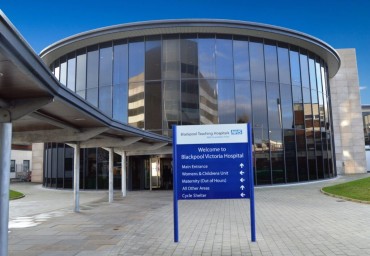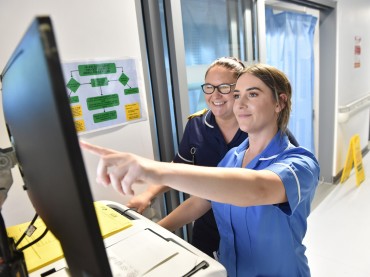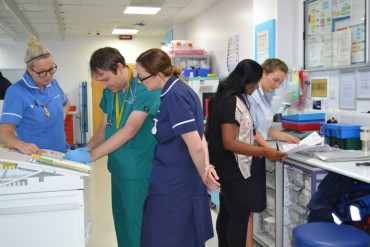What is a loop diathermy?
A loop diathermy is used to treat women with an abnormality on their cervix (neck of the womb). It involves taking a biopsy of the cervix to remove the abnormal cells. This procedure is also known as a large loop excision of the transformation zone (LLETZ).
The procedure is usually performed under local anaesthetic (where a medication is used to ‘numb’ the neck of the womb). However, in some cases the procedure is performed under general anaesthetic (asleep for the entire procedure). This would be discussed with you following your coloposcopy (detailed examination of your cervix).
Why should I have a loop diathermy and what are the benefits of treatment?
Following your recent smear/colposcopy examination, you will have been advised you need treatment to the abnormal cells of the cervix by performing this treatment the area of abnormal pre-cancerous cells which have been identified on your cervix will be removed. This does not mean that you have cancer but that the cells are showing pre-cancerous cells. In the vast majority of cases, the treatment is successful and no further treatments are necessary, however, it is still important to attend follow-up smears as advised.
What exactly happens when I come for treatment?
Treatment is very similar to that of a colposcopy examination. You will have a consultation with the colposcopist / nurse colposcopist first and then you will be taken into the examination room. You will be asked to undress from the waist down (if you wear skirt, this does not need to be removed). You will be given privacy and time for this.
The colposcopy nurse will ask you to take a seat on the examination couch, providing you with a modesty sheet. The couch has padded supports on it where you rest your legs. The colposcopy nurse will help you position yourself correctly
When you are in a comfortable position, the colposcopist will gently insert a speculum into the vagina, the same as when you have a smear test. The colposcopist will then use the colposcope to examine the cervix and also dab on the different liquids to help identify and highlight the abnormal areas.
Once this has been done the abnormal areas will be numbed using local anaesthetic, time will be given for the local anaestheic to work and then the treatment will be carried out. The treatment can take around 10-15 minutes in total.
After the treatment the speculum will be removed and you will be asked to stay on the examination couch for a few minutes to rest. The colposcopy nurse will then ask you to get up and dressed in your own time, giving you privacy to do so.
Once you are dressed you will be taken into a recovery room where you will be given a hot drink. The colposcopist will then talk to you about the procedure.
What will I expect to happen afterwards?
You may experience some or none of the following:
• The procedure should not be painful but may cause some mild discomfort similar to period-type pain / cramps. Paracetamol or Ibuprofen should relieve any discomfort you may experience after the procedure.
• You may experience a red / brown discharge for a period of time. It could be a few days to four weeks following the treatment. You may also notice a few black particles which are normal, resulting from the diathermy used during the treatment. Everyone heals differently and some women may experience discharge for longer than others.
• There may be a temporary change in your menstrual cycle after treatment.
You are advised to:
• Rest for the remainder of the day.
• Bath or shower as normal but do not attempt to douche inside the vagina, and avoid using perfurmed products.
• Use sanitary pads for four weeks, not tampons; this will help to reduce the risk of infection and allow the cervix to heal.
• Avoid intercourse for four weeks; this will help to reduce the risk of infection and allow the cervix to heal.
• Avoid swimming for two weeks or until the bleeding / discharge has stopped. Other normal activities, including light exercise, may continue.
Other things to consider:
• You may drive following treatment unless advised not to by the colposcopist.
• You may consume alcohol in moderation after treatment.
• Due to the risk of post treatment infection it is advised that treatment must be postponed until you return from any holidays overseas. Please note if you seek medical attention outside of the UK for complications arising from the treatment this may not be covered by your insurance.
How will I know if something is wrong?
Occasionally infection may develop in the healing skin which might cause heavy bleeding around 10-14 days following treatment. If you have any heavy bleeding that is worse than a normal period or you are at all concerned, contact your GP or ring the clinic for advice.
If you experience any ongoing period-like cramps, smelly discharge, a fever / raised temperature, you may have an infection, please contact your GP or ring the clinic for advice.
What should I do if I have a problem?
If you have any concerns following your treatment please do not hesitate to contact the Colposcopy Clinic Team (contact details are at the end of this leaflet). We do also advise you to contact your GP.
What are the risks?
Bleeding:
It is normal to have some light bleeding and discharge for up to four weeks following the treatment to your cervix. Initially you should expect to have a mucky-looking discharge (brown from the iodine used) with a few spots of blood.
This may then become a very watery discharge. It is not expected for you to have heavy bleeding. If you have any concerns, please ring the contact number on the back of this leaflet or telephone 111.
Infection:
If you have a vaginal discharge which has an offensive (bad) smell, it may indicate that you have an infection. Please go to your GP who may prescribe you antibiotics.
Pregnancy and Premature Delivery:
The treatment should not affect your ability to become pregnant. The most recent evidence is that one treatment would not increase the risk of preterm labour, however, several treatments may weaken the cervix and may slightly increase the risk of preterm labour. Therefore, if you get pregnant following this treatment, we advise you to inform your GP and midwife that you have had treatment to your cervix.
Frequently Asked Questions:
How can I prepare for the loop diathermy?
Carry on as normal before the procedure. It is important that you eat and drink before the procedure.
If you use IUS / Mirena / IUCD / Coil, please abstain from sexual intercourse or use a barrier contraception / condoms for 7 days before your treatment as the coil will be removed and not reinserted at this visit. This does not apply if you are using oral contraceptives / injectables or implants.
You may like to bring someone with you so that they can take you home after the procedure, but it is not essential.
Will I feel any pain?
A local anaesthetic is given before the treatment so you should not feel any pain during the procedure, although you are likely to feel some pressure on your cervix. You may feel some discomfort after the treatment. You may experience a mild period like pain - if this occurs we advise that you take your normal pain relieving medication.
If having a General Anaesthetic (GA), the procedure would be scheduled within four weeks. A letter will be sent to you confirming a date. You will also be advised of pre-procedure preparation for GA.
’m going on holiday, what should I do?
If you are planning on going abroad and have been sent an appointment for treatment, please call us to let us know.
We would normally suggest that you do not travel abroad for at least two weeks following the treatment. This is because of the risk of bleeding or other complications, such as infection.
What happens after the loop diathermy?
You will be asked to stay in the department until you feel well recovered after the procedure. During this time a nurse will check on you and will go through the aftercare advice leaflet and answer any questions you may have.
Will I have a follow-up appointment?
It is very important that you have your first cervical cytology test of cure (smear) six months after your treatment. We will confirm if this will take place in the colposcopy clinic or your GP surgery when we write to advise you of the results of your loop diathermy treatment. If you have any queries, please contact the colposcopy team, numbers for which are on the back page of this leaflet.
Useful websites:
British Society for Colposcopy and Cervial Pathology www.bsccp.org
Healthtalkonline www.healthtalkonline.org Jo’s Cervical Cancer Trust www.jostrust.org.uk
NHS Choices www.nhs.uk
Cancer Research UK www.cruk.org
Cancer Screening NHS www.cancerscreening.nhs.uk
Helpline
Jo’s Cervical Cancer Trust offers a listening ear for those seeking support and information about cervical abnormalities. Call: 0800 802 800
Leaflet Number PL/857
Author Adele Whitehead
Review Date 01/08/2026



